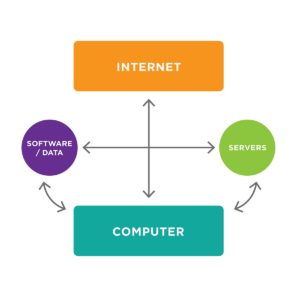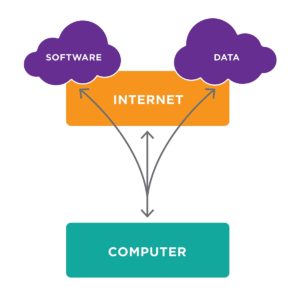
Before I started working for TPI, I would drive by salvage yards and stare at the heaps of gutted vehicles piled high into the air, and think that all of those heaps could only mean one thing: bad stuff for the environment. I mean, the equation generally looks like this: vehicle = environmental problem. Am I right? Well, not exactly. Now that I have more experience with what salvage yards do and how they can function, I know that they can actually be considered environmental stewards when they are doing things correctly, as well as being involved in the largest recycling industry in the United States, the automotive one. The answer to my question, then, is ‘yes,’ salvage yards CAN be green. Let’s take a look at how that can happen.
When we think of vehicles in environmental terms, we tend to think of them as being less than green. Their carbon footprint is large, and the majority of this impact comes from the manufacturing process and the subsequent use of fossil fuels in their running. However, at the end of a vehicle’s life, this carbon footprint can be reduced in a variety of ways, and the environmentally responsible management of salvage yards can help make a necessary industry (vehicle dismantling) a green one. We will start by looking at some of the ways salvage yards implement the 3 R’s, reduce, reuse and recycle:
- Gas tanks and batteries: Gas tanks are punctured, emptied and removed, and then shredded for scrap metal (se no. 4 below). The fuel is then reused by recyclers or sold for re-use. Batteries are tested and ones that are in good condition are sold for re-use. If they are not in good shape, they are sent out to be rebuilt or recycled.
- Tires: Tires that are still in good shape (with lots of tread life) are sold for re-use, and those that are no longer safe can be sold to recyclers and processed in different ways. Tires represent a problem in terms of landfill due to their non-decomposability, size, and shape. As well, when they are sitting around in landfills, they collect rainwater and become breeding grounds for insects and the diseases they carry. Because of the need to get them out of landfills, recycling them has become an important industry. Currently, recycled tires can be transformed into playground and transportation surfaces, garden mulch, shoe treads, and a whole lot of other useful things, including a type of fuel.
- Usable parts: as the vehicle is dismantled, usable parts are removed, inventoried and put up for sale, thereby providing an alternative to the purchase of new parts. A reduction in the demand for new parts equates to a reduction in the environmental impact caused by their manufacture.
- Unusable hulk (shell of the vehicle): This portion of the vehicle is crushed and sent to be shredded into small pieces for recovery. The metals are divided up into ferrous (iron) and non-ferrous and sold to scrap-metal recyclers. By using scrap metal in different products (including new cars), we reduce, again, the damaging effects of manufacturing from new.
- Fluids: automotive fluids (anti-freeze, washer fluid, Freon and other refrigerants) pose a significant risk to the environment, and government bodies normally encourage strict standards of drainage and storage (see below for more information on storm water). With these standards followed, there is a much lower risk of ground and water being contaminated. The ARA (Automotive Recyclers Association) estimates that each year the industry collects and reuses or recycles:
- 8 million gallons of gasoline and diesel fuel
- 24 million gallons of motor oil
- 8 million gallons of engine coolant
- 5 million gallons of windshield washer fluid
- 96% of all lead acid batteries
The amount of fluids and oils safely recovered is equivalent to 8 Exxon Valdez disasters. That’s quite the figure, isn’t it?
The recycling and reuse of automotive fluids brings us to environmental stewardship, which is defined by the United States Environmental Protection Agency as “the responsibility for environmental quality shared by all those whose actions affect the environment.” While there are still salvage yards that fly under the radar so to speak, most serious ones will adhere to the recommendations proposed by government bodies and industry associations. In following these recommendations, the salvage yards increase their environmental responsibility substantially. A major way that salvage companies can exercise this responsibility is by implementing preventative measures in their actual physical yards. Storm water management is a great example of this.
Storm water is “water that originates during precipitation events and snow/ice melt” (Wikipedia). As run-off, this storm water can soak into the ground or be carried into lakes, rivers or other bodies of water, and will pull pollution along with it. The dismantling of vehicles can release different types of toxins (our example of fluid draining above is an example of this) which are then absorbed into storm water if certain precautions aren’t taken. The repeated release of pollutants into storm water causes cumulative damage that is costly and difficult to correct retroactively. This is where storm water management comes in.
In storm water management, a general idea to follow is that “only rain is in the drain.” In other words, no other fluids or pollutants should be allowed to mix in any way with storm water or seep into the ground. Some of the ways these preventative measures can be accomplished are as follows:
- Prevention of spills and leaks: work with basins under any identified leaks or when you are removing fluids;
- Clean up of spills immediately: if you see a spill, contain it by wiping it up, surround it with rags, socks or pillows, or put an absorbent material like kitty litter on it. Discard the clean-up items responsibly in a designated container;
- Handle fluids properly: this means storing fluids in easily identifiable and adequate containers, which also have some sort of secondary container (i.e. steel drum) to prevent a larger spill. Also, make sure not to mix fluids as this can create hazardous waste and is difficult to dispose of afterwards;
- Items stored outside: any items stored outside that also contain oil need to be covered so that they don’t have contact with rain or snow.
Many of these measures are common sense and require just a few extra implements and some adjustments to a yard’s routine. Others might be a bit more time-consuming and complex, but the end result is well worth it as the impact on the environment is lessened to a considerable degree, and the need for cleaning up toxic messes later on, at much great cost, is greatly reduced, if not eliminated altogether.
Far from being environmental monsters, then, responsible salvage yards actually provide a highly necessary service in a world that relies on automotive transport to such a large degree. It is estimated that up to 75% to 90% of a vehicles components can be reused or recycled, and if yards follow recommended dismantling procedures in their work, there is also important stewardship being practiced. After learning all of this, I see the salvage yards on the sides of highways in a different way now, and appreciate the contribution they make to a cleaner, healthier world to live in.
Useful links:
Environmental Protection Agency (The United States) https://www.epa.gov/
Automotive Recyclers’ Association (The United States) http://a-r-a.org/
Canadian Environmental Protection Act http://www.ec.gc.ca/lcpe-cepa/
The Canadian Auto Recyclers’ Environmental Code http://carec.ca/





